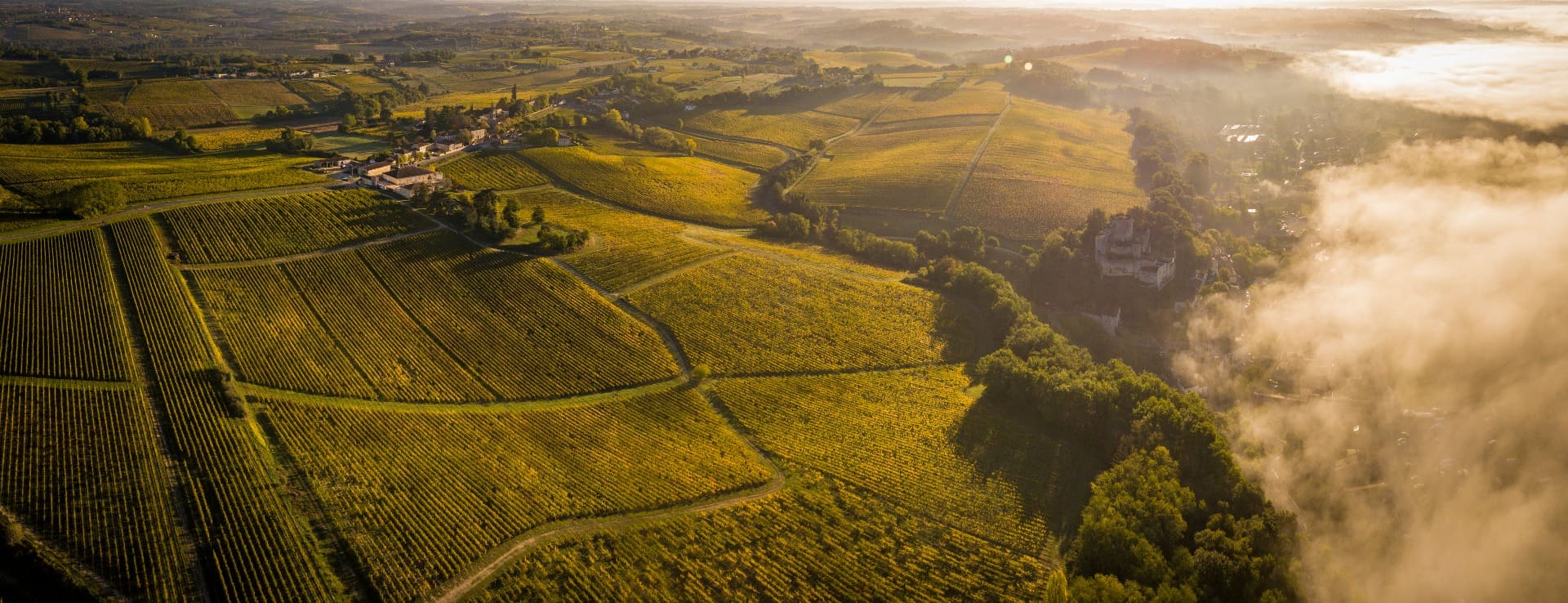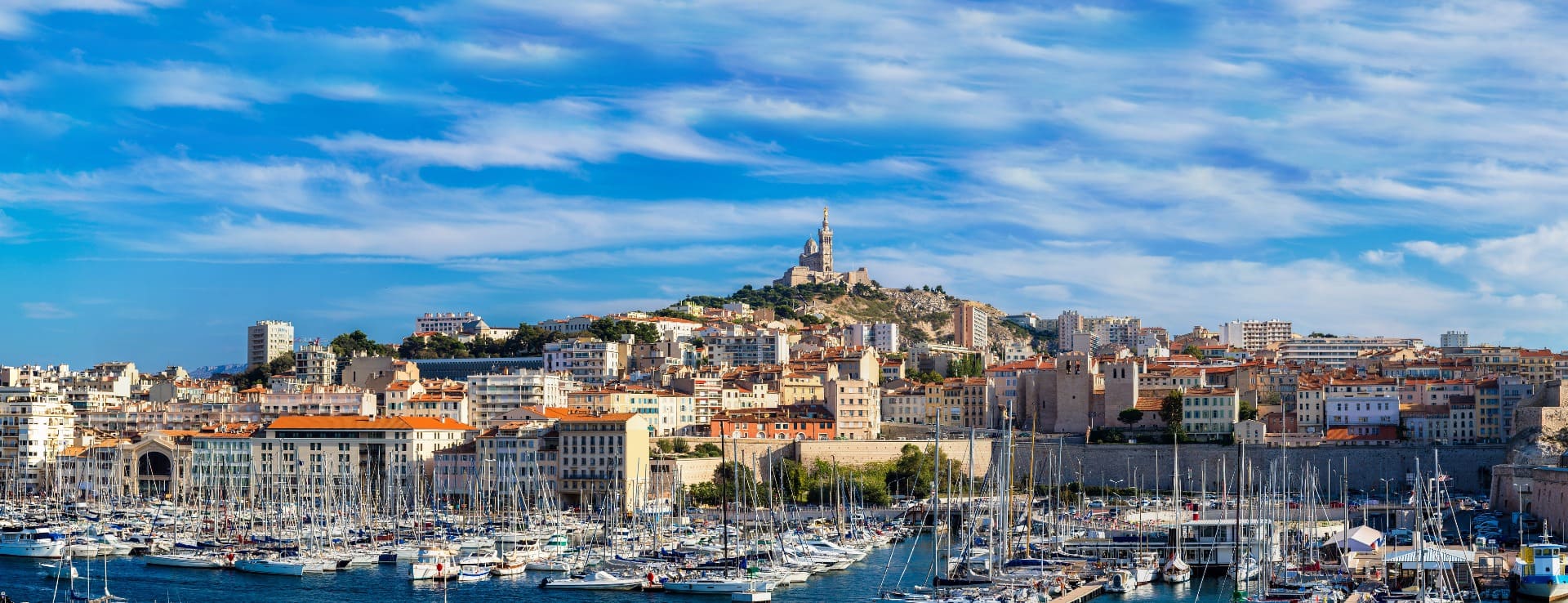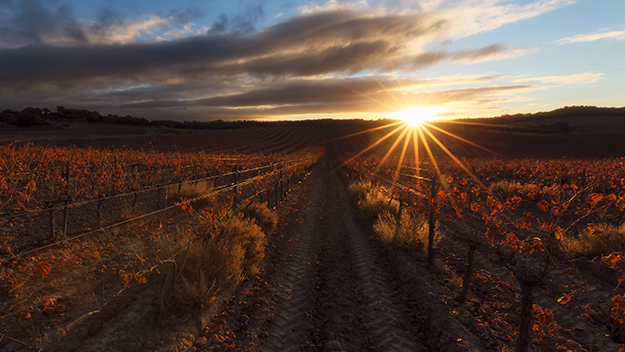Find your winery or vineyard
2 Wineries and Vineyards for sale in AOC Bordeaux / AOC Bordeaux Supérieur / AOC Entre-deux-mers
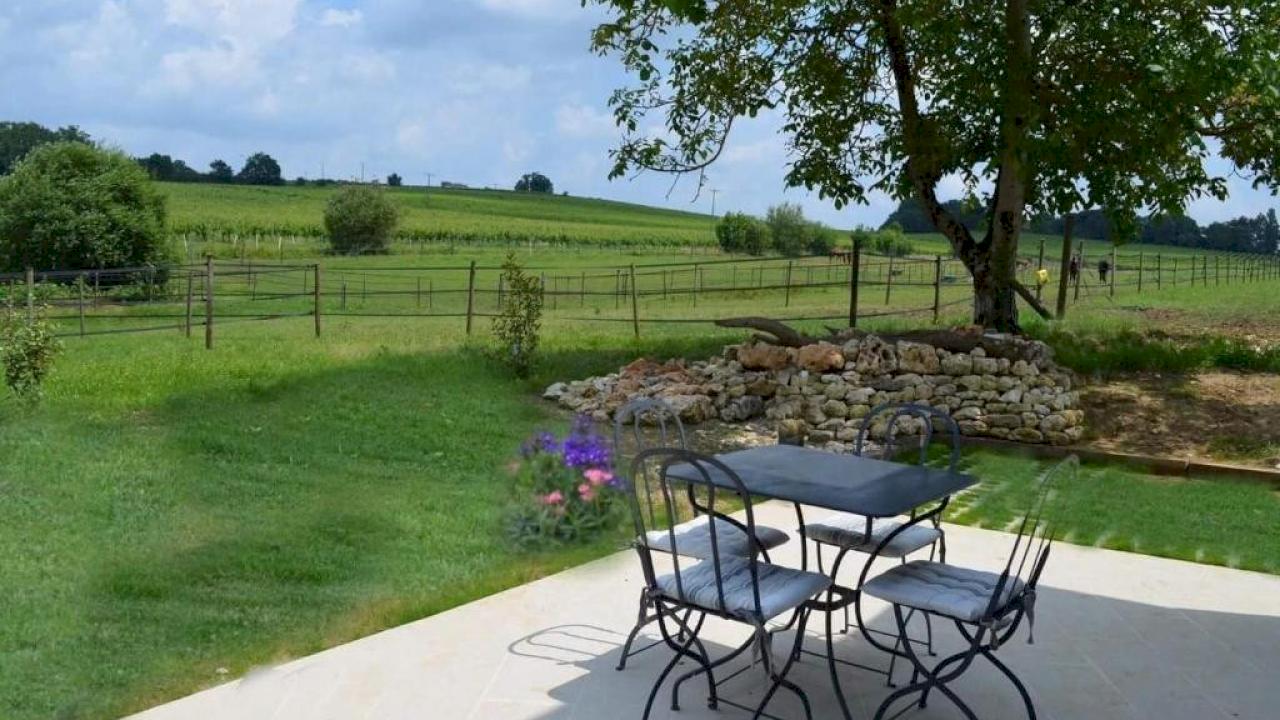
VERY COMPLETE WINERY WITH MANSION, ERQUESTRIAN CENTER AND HOUSES FOR RENT.
AOC BORDEAUX SUPÉRIEUR
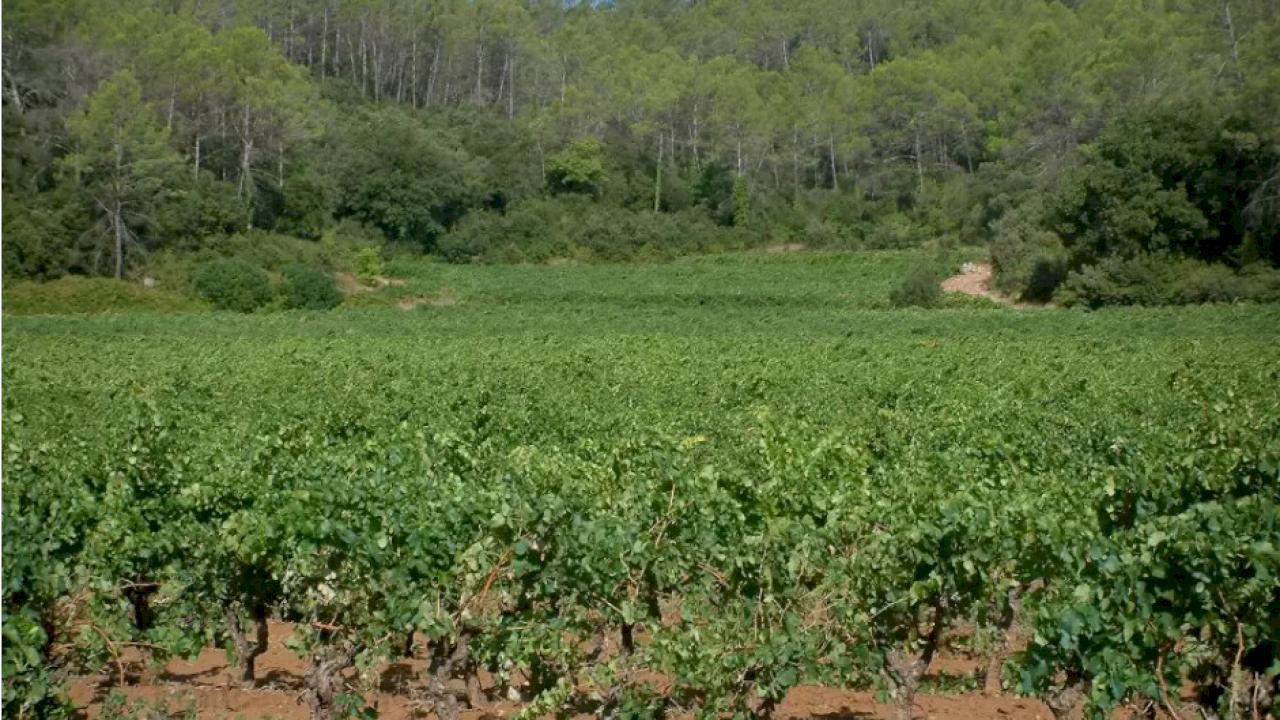
ORGANIC CHATEAU WITH 50 HECTARES OF VINEYARDS.
AOC BORDEAUX SUPÉRIEUR
Infographic of the Denomination of Origin
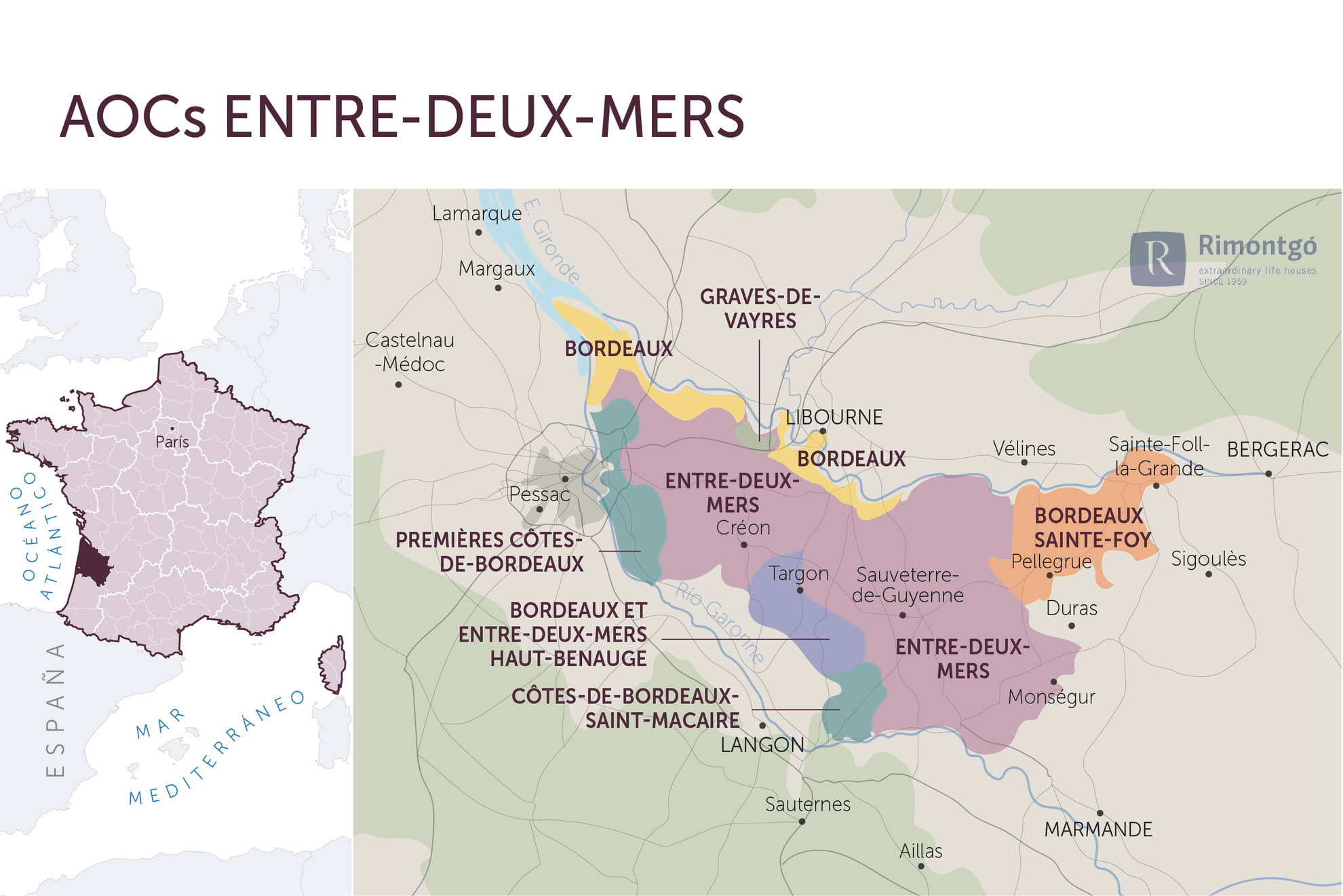
Change to imperial units (ft2, ac, °F)Change to international units (m2, h, °C)
AOC Bordeaux / AOC Bordeaux Supérieur / AOC Entre-deux-mers
THE VINEYARD
In addition to the prestigious crus that give the vineyard its reputation, Bordeaux is also a formidable producer of good value wines, thanks to its more modest AOCs that cover most of the vineyard and have a unique marketing approach.
The Bordeaux vineyard has two faces. With its prestigious crus classés sold at gold prices around the world in some years, Bordeaux remains France's wine showcase. Margaux, Pauillac, Saint-Emilion are names that make the great wine amateurs of the world dream. But that said, one should not think that Bordeaux is limited only to the production of grand crus and expensive wines. The Bordeaux vineyard is above all a great supplier of good value wines. These wines benefit from the incomparable notoriety of the name, this other side of Bordeaux is represented by more modest AOCs such as Bordeaux and Bordeaux Supérieur, Côtes de Bourg, Côtes de Blaye, Côtes de Francs, Côtes de Castillon, Entre deux-Mers and its white wines or Graves de Vayres.
This is the paradox of Bordeaux, there are so many wines that it is the only one to be able to sell its wines at astronomical prices, but also and above all at very affordable prices. More than a paradox, it is a talent linked to a well-established economic structure, a real ecosystem, driven by the "négociants", "courtiers" and winegrowers who work closely together. However, this mechanism has had its share of failures, such as the crisis of overproduction that began in the late 1990s and continues to this day. This overproduction linked to a growth crisis is testimony to the profound changes in the vineyard. Whereas in the 1960s in the Gironde, the AOCs covered some 70,000 ha and the table wine vineyards some 45,000 ha, in the space of 30 years, the latter have been integrated into the AOCs. Thus the AOCs Bordeaux and Bordeaux Supérieur alone have increased by 127% between 1981 and 2005, transforming at a stroke a giant vineyard with feet of clay.
Today, Bordeaux is represented by 9,500 wineries, produces nearly 800 million bottles each year and, with 120,000 ha of vineyards, is the largest AOC vineyard in the world.
AOCs
Apart from the most prestigious DOCs of the Médoc, Libourne and Graves, Bordeaux has several AOCs that produce wines of excellent value for money.
The future of Bordeaux lies in its various AOCs, mostly unknown and underrated, where promising wines are produced. They are mainly concentrated in two areas of the Bordeaux vineyards: the right bank of the Gironde and Dordogne rivers and the vast territory between the Dordogne and the Garonne that we call Entre-deux-Mers, with two exceptions, AOC Bordeaux and Bordeaux Supérieur, which cover the whole of the Bordeaux vineyard. These two AOCs cover 62,500 ha, a little more than half of the total area of Bordeaux vineyards (121,800 ha) where red, white, rosé, claret and sparkling wines are produced.
THE RIGHT BANK
Along the Gironde estuary, in the far north of the department, at the edge of the Charentes vineyard, are the AOCs Côtes de Blaye (7,000 ha) and Còtes de Bourg (3,900 ha). These AOCs produce mainly red wines and accessorily white wines. They are two dynamic AOCs that in a few years have made considerable progress in terms of quality.
Further south, still on the same bank and upstream of Libourne and on the border of the Dordogne department, is the AOC Côtes de Castillon (2,870 ha) which represents a heterogeneous production and benefits from the technical support of winemakers from Saint-Emilion who have invested in this AOC. To the point that today the best wines follow some Saint-Emilion. The AOC Côtes de Francos (469 ha) is beginning to take its first steps and to show its best potential by increasing its reputation.
ENTRE-DEUX-MERS
Once the cradle of the table wines of the Gironde, it is in this area of the Gironde that a large part of the vineyard was converted from table wine to AOC Bordeaux. In this hilly region, chicken farming is still practised, where corn is planted around the vineyards or goats graze. Without counting the AOCs where sparkling or sweet wines are produced such as Cadillac, Loupiac and Sainte-Croix-du-Mont, Entre-deux-Mers counts 6 AOCs. Along the right bank of the Garonne are concentrated the AOC Côtes de Bordeaux (3.360 ha), which starts from Saint-Eulalia in the north to Saint-Macaire in the south near the sweet wine AOCs. This AOC produces mostly full-bodied red wines coming from the limestone slopes overlooking the river. Within this AOC there are 230 ha used for the production of sweet wines with more flexible conditions than the other sweet wine AOCs.
To the northeast is the small AOC of Graves de Vayres (530 ha) where, as its name suggests, its gravel terroir is reminiscent of the terroir of the AOC Graves-Pessac Léognan. On most of this land, the AOC Entre-deux-Mers (1,430 ha) is dedicated solely to the production of dry white wines. On the border with the Dordogne, the AOC Saint-Foy-Bordeaux (280 ha) produces red wines as well as white and sweet wines, while the AOC Côtes de Bordeaux Saint-Macaire (55 ha) produces only sweet wines.
THE CLIMATE
Climate is another important factor in Bordeaux's great terroir. Along with the sun, the vines and the hand of man, climate is one of the four fundamental elements in the construction of a wine terroir. In Bordeaux, climate also plays a particular role because the vineyard is under oceanic influence.
The climate that governs a plot, an AOC or a vineyard, wherever it is, as well as the orientation of the vineyard, the slope, the proximity to a cliff, a valley, a forest or a body of water, all influence the microclimate of this area. Although Bureods is governed by an oceanic climate, there are many microclimates at plot level. For example, in the region, the winds play a sanitary role, without these incessant air currents that ventilate the rows of vines, the climate would be too humid to be favourable to vine-growing. The regular winds from the west and north, channelled by the estuary, the reliefs and the pine forests also favour the ripening of the grapes, drying and tending the vines. In the AOC Pessac-Léognan, the 48 ha vineyard of Château Olivier has the particularity of being in the middle of a 100 ha forest. A plot located 10 metres from a forest is generally exposed to spring frosts and high summer temperatures, and at harvest time the grapes were far from perfect. The property decided to clear the forest to favour air currents. The result was as expected, no more spring frosts, temperatures dropped in summer and the health of the grapes improved.
Wine is not the only thing that influences the vineyard. In the Médoc, water bodies play a fundamental role in the ripening of the grapes, in the regulation of temperatures and in the health of the vineyard. Château Montrose shares with Château Latour and Château Léoville- Las Cases the privilege of being one of the closest crus classés to the Gironde and of having a microclimate strongly marked by the river. Its vineyard, where the grapes ripen differently because the vines are exposed to the east and northeast, would not reach the complexity it is known for without the influence of the river located 100 metres from the first plots and the north wind. However, during the frosts of 1991, the surrounding properties, less windy and further away from the Gironde, lost between 50 and 80% of their production and Montrose only lost 10% because the river's water mass slowed down the sharp drop in temperatures. In the case of the 2003 heatwave, it played the opposite role by lowering the night temperatures more than the average of the other Châteaux. Hence the great success of this Château in 2003. These microclimates create great variations in the evolution of the grapes even within the same estate. Some Châteaux like Château Bessan-Ségur, a cru bourgois located in the north of Médoc which has the particularity of having a vineyard divided in two parts, one part on the plain and the other on the estuary, register up to 10 days of difference in the ripening of the grapes at harvest between the two sites.
Today, although the soils are analysed by microbiologists and agronomists, the climatic observation of a plot remains an empirical science that still depends on the observation skills of the winegrowers.
NÉGOCIANTS AND COURTIERS
The gears of Bordeaux. Bordeaux's prosperity is due not only to the quality of its wines but also to the marketing methods orchestrated by the negociants and brokers, two key professions that have long been the specificity of Bordeaux.
Throughout its history, each Château has developed its own marketing model. Often the winemakers sell their wines directly as in Alsace, the Loire or Languedoc-Roussillon, other marketing models are through the major wine merchants who sell the majority of the region's production as is the case in Champagne. Sometimes the two models also coexist, as in Burgundy or the Rhône. But nowhere does the marketing reach the level of complexity and alchemy that we find in Bordeaux.
The level of interconnection between the three main trades of winegrower, négociant and courtier is such that one can speak of an ecosystem. While the first of these three professions is the best known of all and focuses on wine production, the other two professions are less well known to the general public.
The "négociant": they have been in existence for centuries in Bordeaux and today around 400 companies are responsible for the marketing of 70% of Bordeaux's total wine production and 80% of its exports. Not all of them are of equal importance, but two categories can be distinguished. The first is made up of large companies that buy wine in vrac from winegrowers and sell it under brand names (Calvet, Castel, Cordier, Dourthe, Ginestet, Malesan...) The second category is made up of companies specialising in the marketing of grands crus, mainly to foreign markets.
The crus classés or similar crus all pass through the Bordeaux "place", a microcosm of merchants who ensure the marketing. They have developed a real expertise in the most diverse markets, especially in export. But to ensure this relationship between the negociant and the winegrowing property, the courtier or broker is the privileged intermediary.
The "courtier": the first appeared in the 17th century in Bordeaux. Their qualities of market analysis, discretion and efficiency have been recognised since that time. Thanks to them, the Bordeaux Chamber of Commerce asked them to draw up the famous classification of 1855. Today, the courtier occupies a transversal position in the Bordeaux ecosystem. He gathers economic information to better fulfil his role as intermediary between the winegrower, who is the seller, and the négociant, who is the buyer. He knows perfectly the characteristics of both and can thus use this knowledge to guide the winegrowers towards the right négociants according to the style of wine or the market for which it is destined. He is a great advisor to the Châteaux at the time of en primeur sales. His knowledge of the different markets allows him to have a certain influence on the starting prices. Some years, when the vintage is easy to sell, his role is called into question, but when the situation is more delicate, he becomes a precious ally for the winegrower.
PRIMEUR SALES
A success story. In the spring of each year, the Bordeaux en primeur wine tastings bring together thousands of professionals from all over the world. They come to discover and assess the new vintage, allowing many properties to sell their production before the wine is even bottled. Every year at the end of March, beginning of April, the most prestigious Bordeaux Châteaux organise the "gran-messe" de primeurs. They invite nearly 3,000 professionals from all over the world (journalists, tasters, négociants, courtiers, experts, buyers, importers, restaurants and sommeliers) to come to Bordeaux to taste and assess the new vintage, while it is still in the making. This highly mediatic week allows the Bordeaux winegrowers to measure the impact of the new wine in the eyes of the prescriptors and thus fix the price of the wines. But in addition to the media aspect, this sale also responds to an economic need. In spring, the vinifications are finished, the wines are ready, but the grands crus still need to be aged in barrels for several months and then bottled. As they market their wines just after bottling, they are not paid until two years after the harvest. Thus, with the en primeur system, this time gap between harvest and marketing can be bridged. This is the reason why these wines are sold through this system of négociants, cavistes and internet sales (millesima.com, 1855.com...) at a preferential price and knowing that the wines will not be sent to their final buyers until one year after the purchase.
This mechanism for regulating farm profits has become the most formidable public relations machine in the wine world. An event that has beautifully accompanied the evolution of wine in society. Wine has gone from the status of a foodstuff to a hedonistic product with a strong cultural connotation, the most prestigious grands crus now entering the closed circle of luxury. This mediatisation and change of status has been amplified by the influence of certain great wine tasters such as the American Robert Parker, who have encouraged speculation in certain vintages. Hence the rise in prices with the 2000 and 2005 vintages. But generally there is a point of uncertainty in each vintage, the wines are tasted by thousands of experts during that week, but the wines are in a state of ageing and not in their final state. So there are some vintages like 2001 considered as good by the experts, but not exceptional at the time of the en primeur tastings, finally turned out to be better wines than expected. The exact opposite can also happen, for example, with the 1975 vintage. After more than 20 years, thanks to the en primeur tastings, Bordeaux has become the most mediatic vineyard in the world, reaching consumers all over the world.
Discover more wineries and vineyards for sale in these wine regions in France
Subscribe to our mailing list to receive news about wineries and vineyards.

